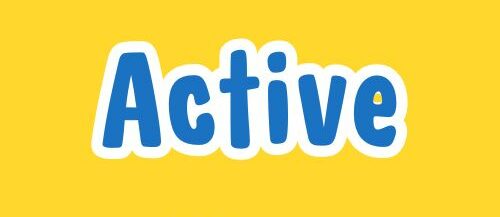Pilates is a type of exercise that’s been around for over 100 years, but it’s more popular than ever today. Maybe you’ve seen sleek Pilates studios popping up in your neighborhood or heard your friends raving about its benefits. But what exactly is Pilates, and how can it help you reach your fitness goals?
This guide will break down everything you need to know about Pilates, from its core principles to the many ways it can benefit your body and mind. We’ll also explore how Pilates can be adapted to fit a variety of goals, whether you’re looking to tone up, improve flexibility, or simply move your body in a healthy way.
What is Pilates?
Pilates is a low-impact exercise system that combines elements of strength training, flexibility, and core conditioning. It emphasizes controlled movements with proper breathing techniques to improve your posture, balance, and overall well-being.
Here are some key principles of Pilates:
- Focus on the core: Pilates strengthens your deep core muscles, which provide stability and support for your entire body. This can help improve your posture, reduce back pain, and enhance your performance in other activities.
- Controlled movements: Pilates exercises are performed slowly and deliberately, with an emphasis on proper form and alignment. This helps to avoid injury and ensures you’re targeting the right muscles.
- Breathing: Breathing plays a vital role in Pilates. You’ll learn to coordinate your breath with your movements, which can improve oxygen flow, enhance concentration, and promote relaxation.
- Mind-body connection: Pilates underscores the synergy between your mental and physical well-being. By focusing on your movements and breath, you become more aware of your body and how it moves.
Benefits of Pilates
It presents a diverse array of advantages suitable for individuals across various age groups and fitness capacities. Here are some of the most common:
- Improved strength and tone: Pilates builds strength in your muscles, leading to a more toned and sculpted physique. This can boost your confidence and improve your overall fitness level.
- Enhanced flexibility: Pilates stretches and lengthens your muscles, increasing your flexibility and range of motion. This can help you move more freely and reduce your risk of injury.
- Better posture: Pilates strengthens your core and improves your body awareness, leading to better posture. This can help alleviate back pain, improve your breathing, and boost your confidence.
- Increased balance: Many Pilates exercises challenge your balance, which can improve your stability and coordination. This can be beneficial for everyday activities and can also help prevent falls.
- Stress reduction: Pilates incorporates controlled movements and deep breathing techniques, which can promote relaxation and reduce stress levels.
- Injury rehabilitation: Pilates can be a valuable tool for rehabilitation after an injury. The controlled movements and focus on proper form can help to strengthen injured muscles and improve mobility.
How Can Pilates Help You Achieve Specific Goals?
Pilates is a versatile exercise system that can be tailored to a variety of goals. Here’s how Pilates can benefit you depending on what you’re hoping to achieve:
Weight Loss: While Pilates may not be the most calorie-burning workout, it can still play a role in weight loss. By building muscle mass, Pilates can increase your metabolism and help you burn more calories at rest. Additionally, the focus on core strength can improve your posture and make you appear slimmer.
Toning and Sculpting: Pilates is excellent for toning and sculpting your muscles. The controlled movements target specific muscle groups, leading to a more defined physique. Pilates is particularly effective for toning your core, glutes, and legs.
Improved Flexibility: Tight muscles can limit your range of motion and increase your risk of injury. Pilates incorporates a variety of stretches and exercises that improve your flexibility. This can make you feel more limber and allow you to move more freely in your daily activities.
Better Posture and Core Strength: A strong core is essential for good posture. Pilates strengthens your core muscles, which can help you stand straighter, sit taller, and improve your overall alignment. This can not only boost your confidence but also reduce back pain and improve your balance.
Stress Relief and Relaxation: The controlled movements and deep breathing techniques used in Pilates can promote relaxation and reduce stress levels. Pilates can be a great way to unwind after a long day and improve your overall well-being.
Getting Started with Pilates
If you’re interested in trying Pilates, here are some tips to get you started:
- Find a qualified instructor: Look for a certified Pilates instructor who can teach you proper form and technique. This approach aids in maximizing workout effectiveness while minimizing the risk of injuries.
- Choose the right class: There are many different types of Pilates classes available, from beginner to advanced. Start with a beginner class to learn the basics and avoid jumping into something too challenging.
- Invest in a few basic props: Some Pilates classes may use props such as stability balls, resistance bands, and foam rollers. These props can help to intensify your workout or modify exercises depending on your fitness level.
- Listen to your body: Pilates is not about pushing yourself to the limit. It’s important to listen to your body and avoid pain. If you feel any discomfort, stop the exercise and consult with your instructor.
- Be patient and consistent: Like any exercise program, it takes time to see results with Pilates. Be patient and consistent with your practice to experience the full benefits.
Pilates vs. Other Exercise Programs
Pilates offers a unique combination of benefits that sets it apart from other exercise programs. Here’s a brief comparison:
- Yoga: Both Pilates and yoga emphasize controlled movements, breathing techniques, and mind-body connection. However, Pilates tends to focus more on core strength and proper alignment, while yoga incorporates more spiritual elements and flowing postures.
- Weightlifting: Weightlifting is primarily focused on building muscle mass and strength. While Pilates can also build muscle, it places a greater emphasis on flexibility, core strength, and posture.
- Cardio: Cardio exercises, such as running or swimming, are excellent for improving cardiovascular health and burning calories. Pilates may not burn as many calories as cardio, but it can still improve your overall fitness level and complement your cardio routine.
You can also read : 10 Essential Yoga Tips for Beginners
Conclusion
Pilates is a powerful exercise system that can benefit people of all ages and fitness levels. Whether you’re looking to improve your strength, flexibility, posture, or simply move your body in a healthy way, Pilates can help you reach your goals. With its focus on controlled movements, proper breathing, and mind-body connection, Pilates offers a unique approach to exercise that can leave you feeling stronger, more flexible, and more centered. So why not give Pilates a try and see how it can transform your body and mind?



